Whether starting out in the IT industry or simply looking to order a replacement part it is useful to be able to identify and name the various parts that make up a laptop. In this guide we will run through typical laptop components and their names and functions.
Laptop – External View
We start with the visible components of a laptop. Whilst these vary by model they are broadly similar in most cases.
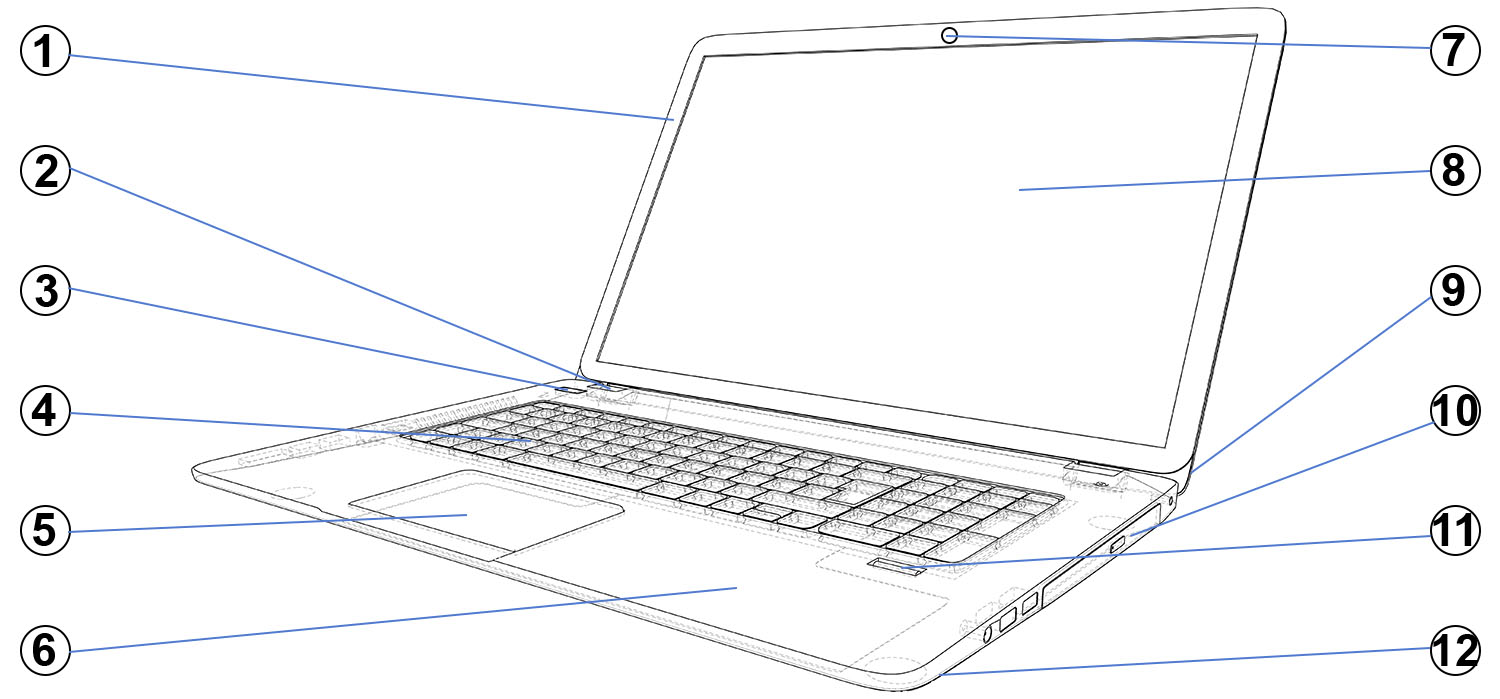
Click on the parts below for more information:
Laptop – Internal/not pictured components
Not all components will be visible in a fully assembled laptop. Many important parts such as the motherboard and hard drives require the machine to be at least partially disassembled to access.
Click on the parts below for more information:
| Cables | Memory | System Board |
| DC Harness | Processor | Wireless Antenna |
| HDD/SSD | Sub boards | Wireless Card |
| Heatsink | Speakers |
Laptop Components

Base Cover
Also known as the base assembly or base plastics, this is the plastic that constitutes the bottom of the laptop.

Cables
There are a myriad of different cables inside a laptop. There are LCD cables which connect the system board to the screen like in the example picture. Other cables often connect components to the system board such as the touchpad or a sub board.
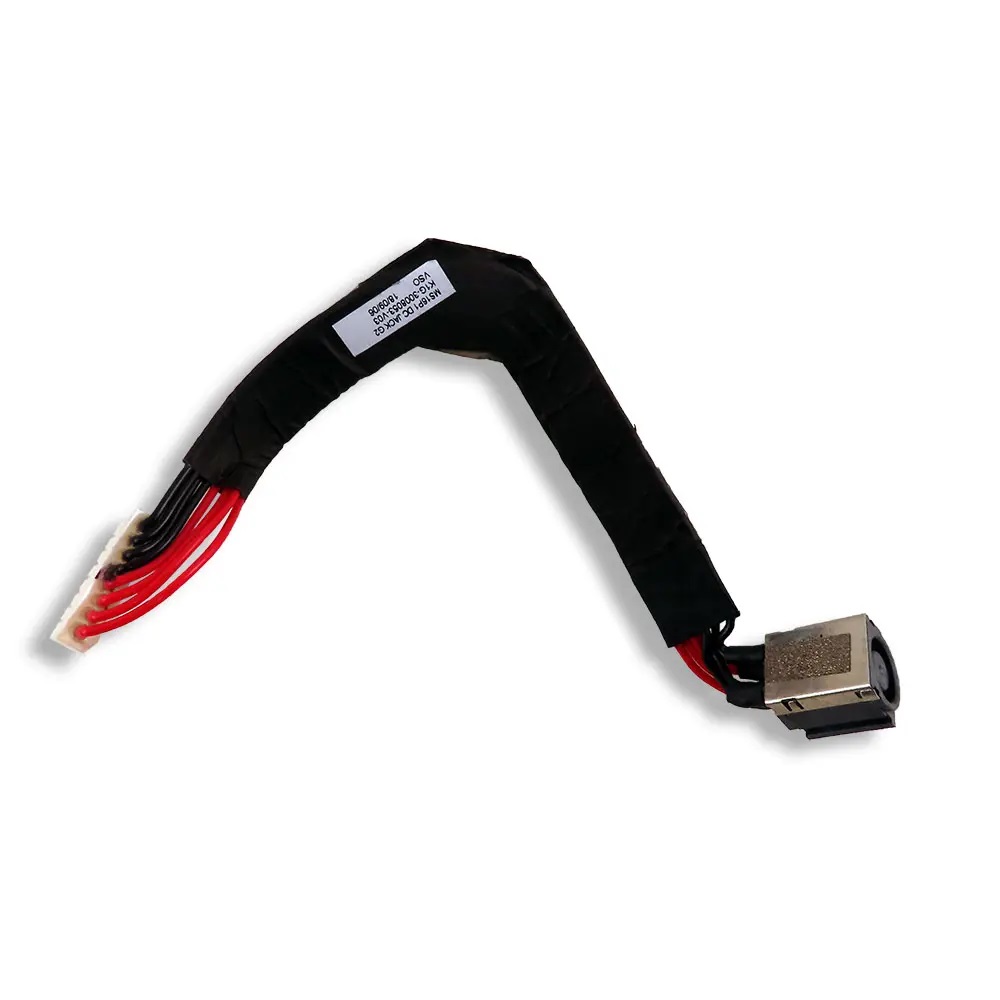
DC Harness
Also known as the DC jack. Often a separate part but can be part of the board, this is the socket where the AC adapter is plugged into the laptop.

Fingerprint Reader
Fingerprint readers are used alongside or as an alternate method of authentication to passwords. Only the reader part of the sub board will be visible when the laptop is assembled. Sometimes comes as part of the palmrest.

Hard Disk Drives/Solid State Drives
Laptop hard drives and early solid states were normally 2.5″ drives of 9.5mm and later 7mm height (pictured top). Often these would have had IDE connectors however later these were phased out in favour of SATA. Newer, quicker solid state drives (pictured bottom) come in the M.2 form factor.
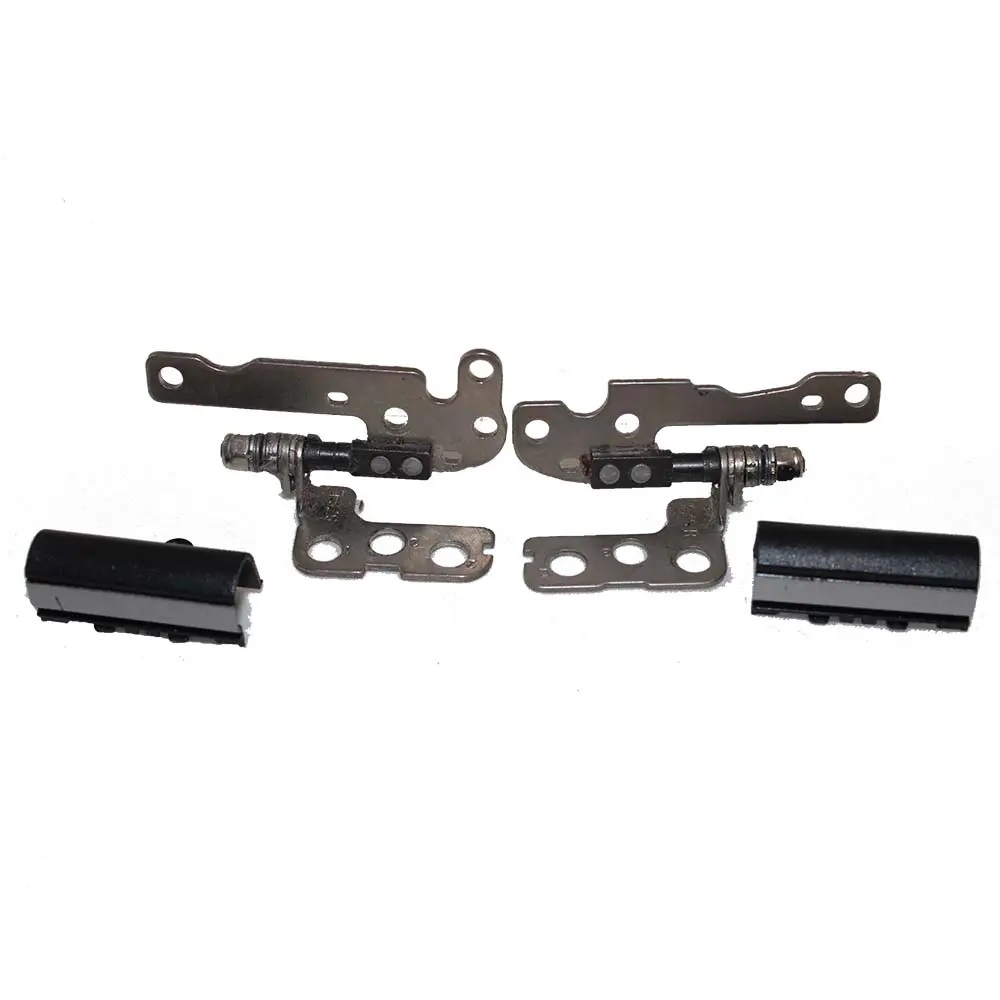
Hinges/Hinge Covers
The hinges that connect the top of the bottom half of the laptop and allow it to open and close. It is important to distinguish the hinge covers which are plastic surrounding the hinges from the hinges themselves which are metal. Often the covers and the hinges themselves will come as separate parts

Heatsink
Heatsinks are placed adjacent to components that produce a lot of excess heat such as CPUs in order to draw the heat away. Sometimes the heatsink and accompanying fan will come as one assembly but other times the fan will be it’s own part number. Many laptops have different models for on board and discrete graphics so it is important to check which one is required.

Keyboard
The laptop’s keyboard. Comes in a variety of layouts and with additional features such as a backlight or anti-spill coating. Often a separate part but other times will come as part of the palmrest.
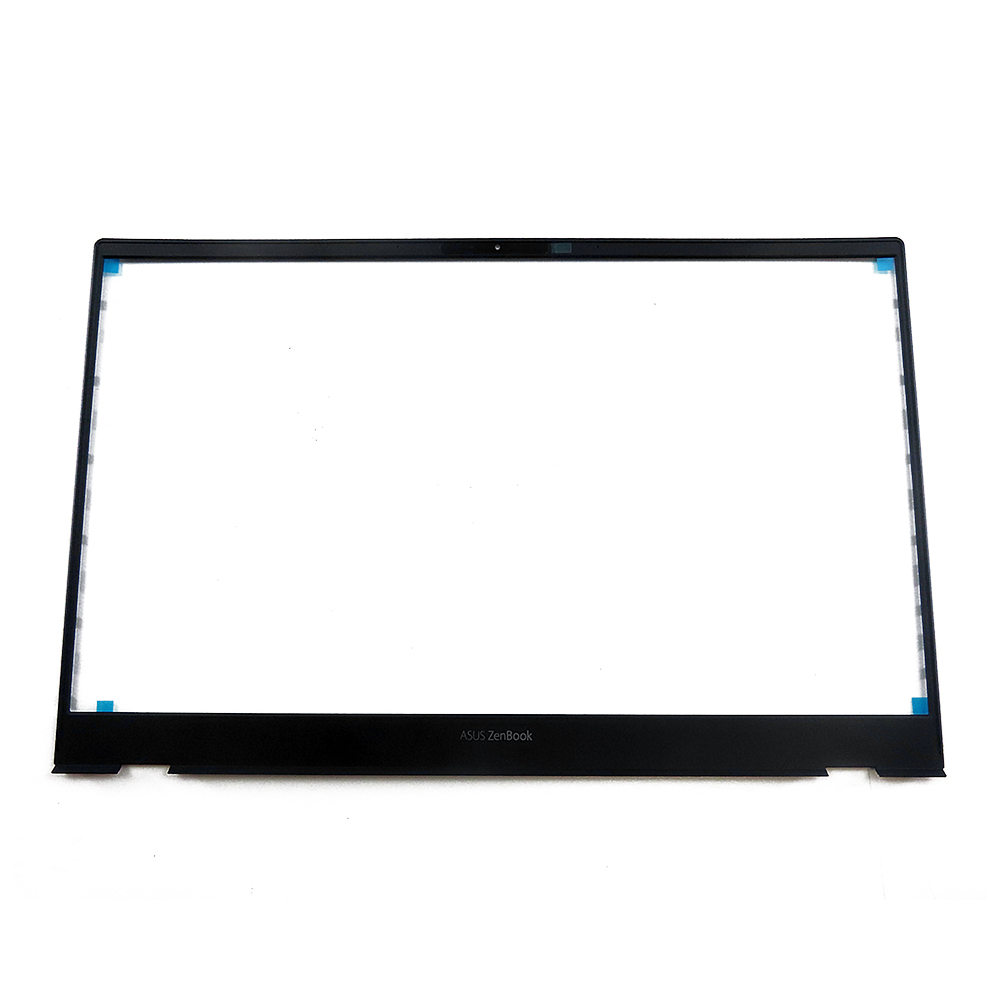
LCD Front Bezel
The plastic surrounding the front of the LCD screen panel. Can come on its own or as part of a complete top half with the screen, webcam and rear cover. On some touchscreen models it will be part of the screen assembly.
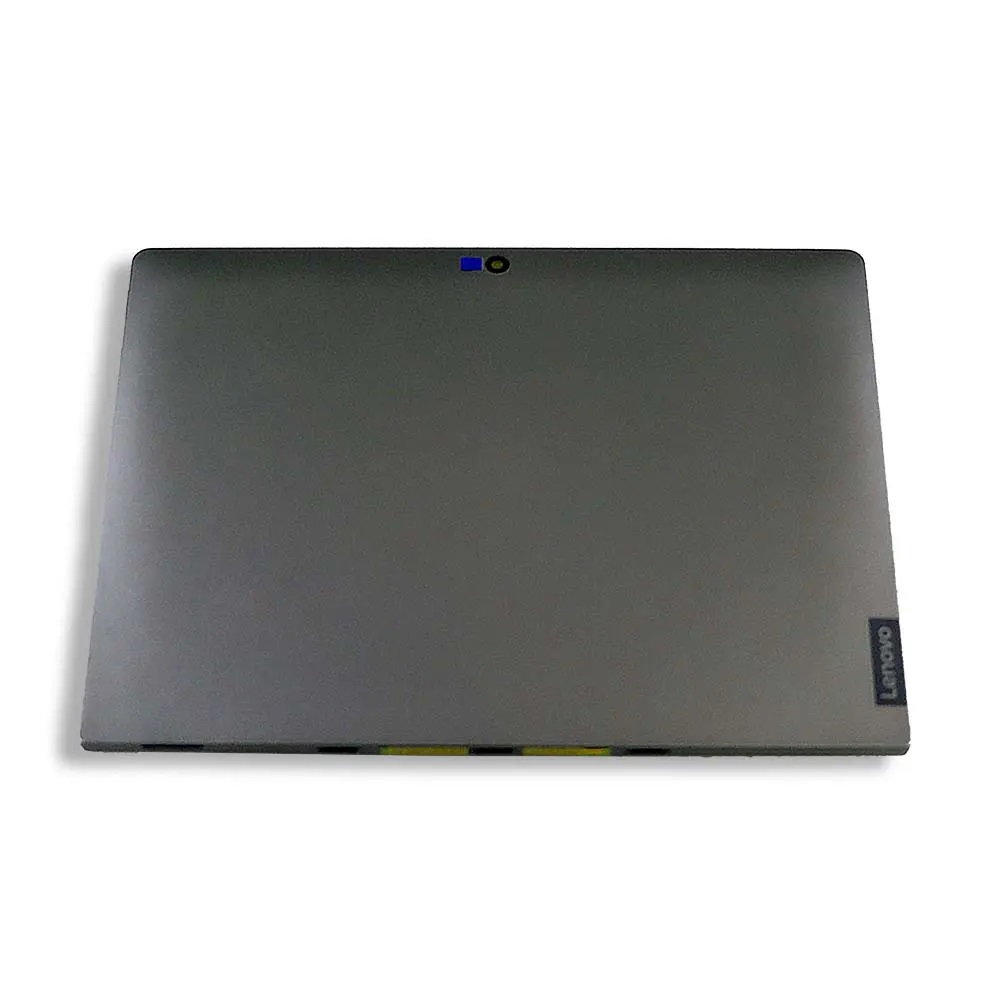
LCD Rear Cover
The plastic at the back of the LCD screen. Can come separately or as part of a top half assembly. Multiple covers to allow for things like WWAN connectivity may exist for a single laptop model.

LCD Screen
Also known as the LCD panel. The laptop’s screen can come as a bare panel, or sometimes as part of the complete top half of the laptop. Touchscreens often have the surround (LCD front bezel) attached. Due to a certain amount of standardisation of screen size and connectors multiple screens are often compatible with a laptop.

Memory (RAM)
Laptops use SODIMM RAM. DDR1, 2, 3 and 4 have different pin layouts so it is important to check which one is required. The voltage required can also vary between system boards.

Optical Drive
An internal CD or DVD drive. Whilst these are becoming more uncommon on new laptops a lot of older models will have them. It is now very uncommon to see floppy drives in laptops.

Palmrest
Also known as the top cover. The part surrounding the keyboard, the top part of the bottom half of the laptop. It is important to check exactly which palmrest you require as often the same laptop model will have multiple ones, for example one with and one without a fingerprint reader. Can contain multiple parts including the keyboard, touchpad and power button on certain models.
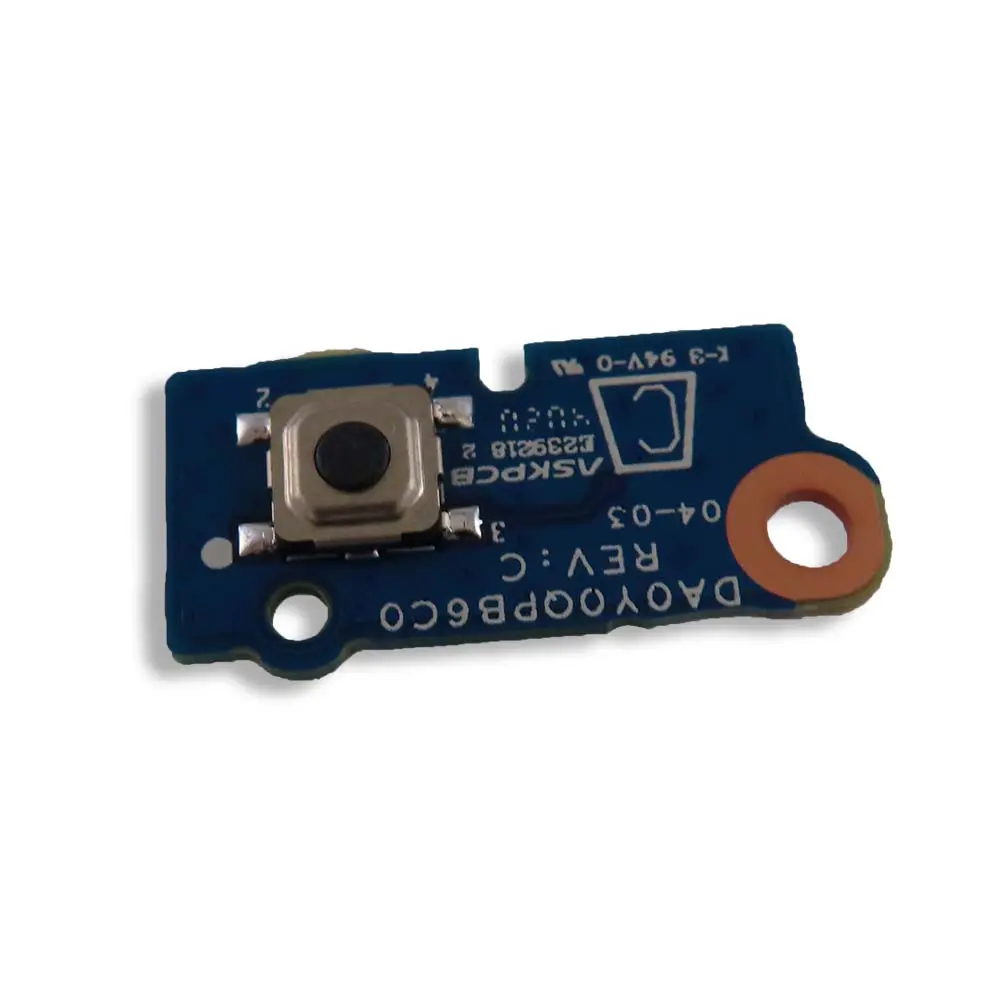
Power Button
Whilst the power button itself is usually attached the to the palmrest there is often a board that sits underneath it to register when it has been pressed. This can sometimes be part of the motherboard itself or a separate sub board.

Processor (CPU)
Laptop CPU’s will often now come attached to the board but particularly in older models can still be a separate part that in a lot of cases can be upgraded depending on socket type and what the system board can support.
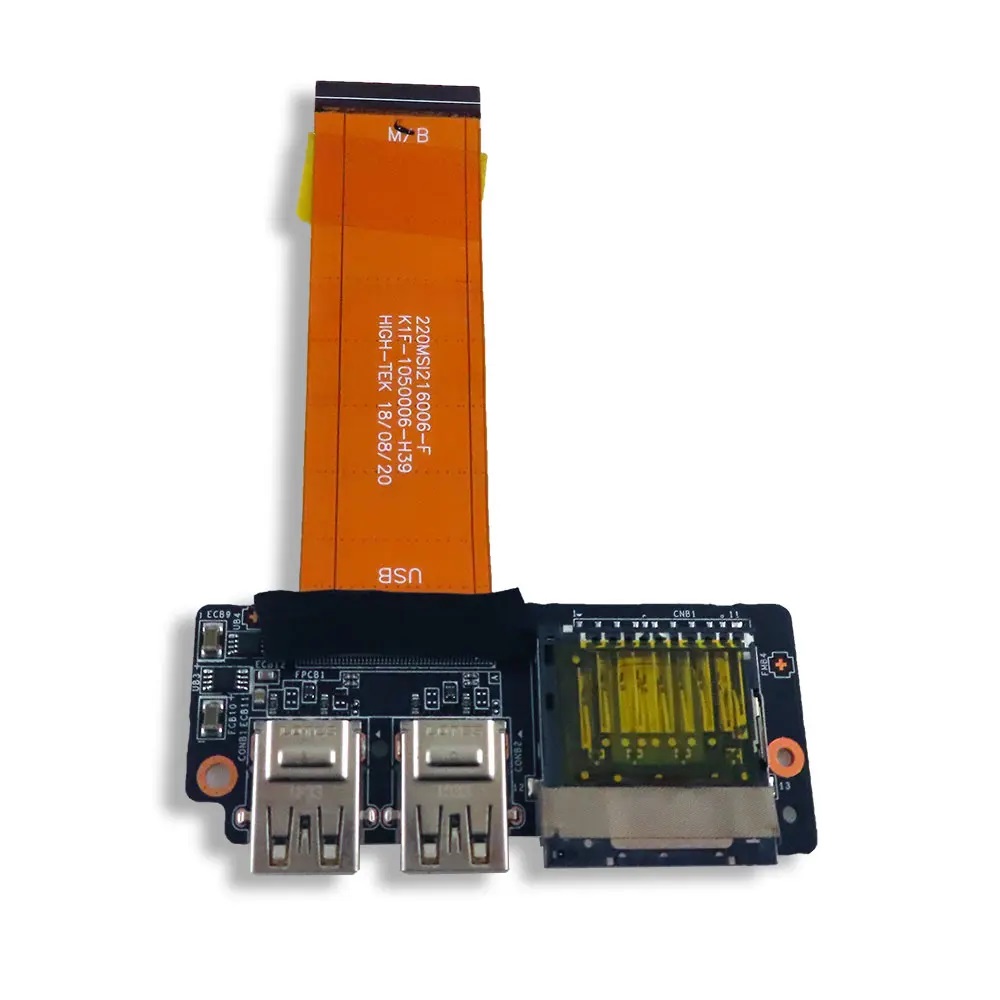
Sub Board
There are a variety of possible sub boards that you may find in a laptop. These can include ones that house ports such as the USB/Card reader one pictured or audio ports or power button boards.

Speakers
The laptop’s speakers. The speakers themselves will usually be visible with the whole assembly connected to the system board.
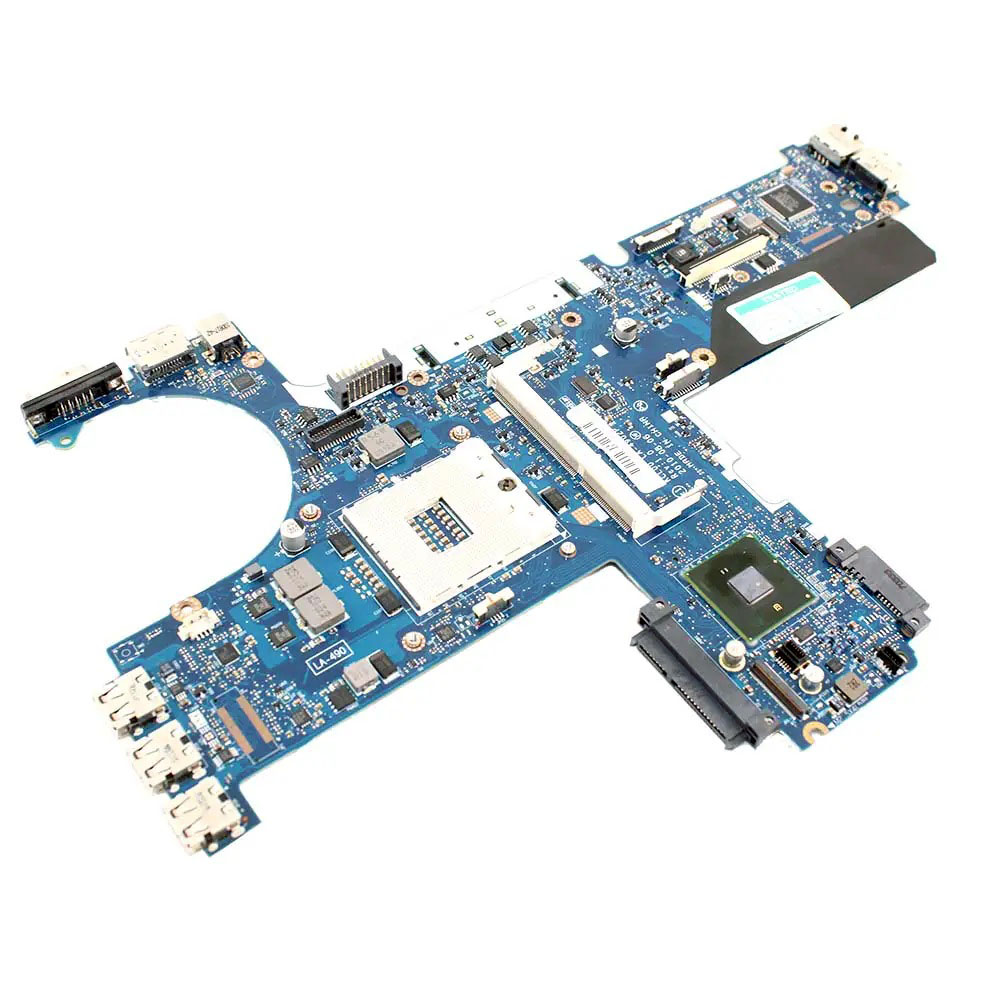
System board
Also known as the motherboard this is the laptop’s main system board. Multiple boards are often available for a single laptop model with different CPU, graphics types or operating system keys.

Touchpad
The laptop’s touchpad, used instead of an external mouse. Can often come with its buttons or can be a separate part. Sometimes comes as part of the laptop’s palmrest.
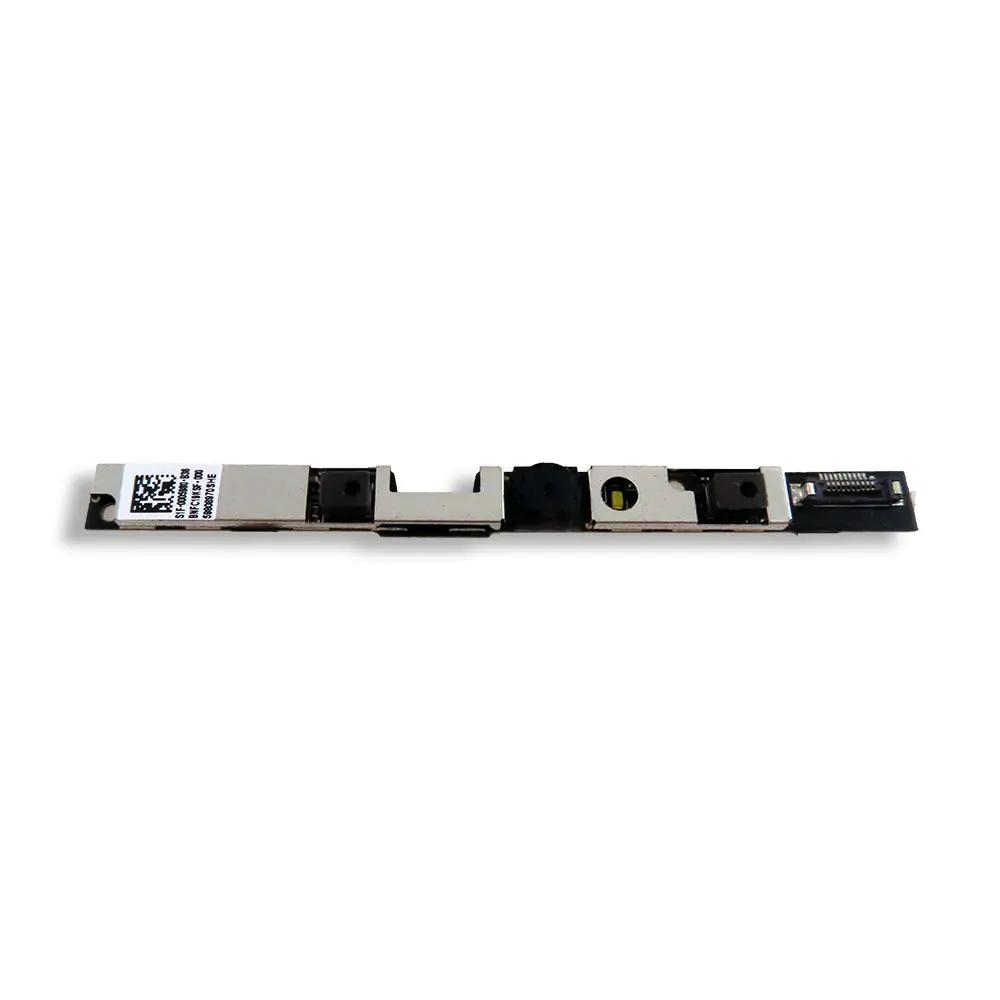
Webcam
The laptop’s webcam. This will often include the microphone as well as the camera as a single assembly. A laptop model may have multiple compatible webcams so it is important to check what features you need.

Wireless Antenna
Depending on the wireless card in the laptop, wireless antenna can provide WLAN, Bluetooth and WWAN connectivity. They are normally position on the LCD rear cover and run down and connect to the wireless card.
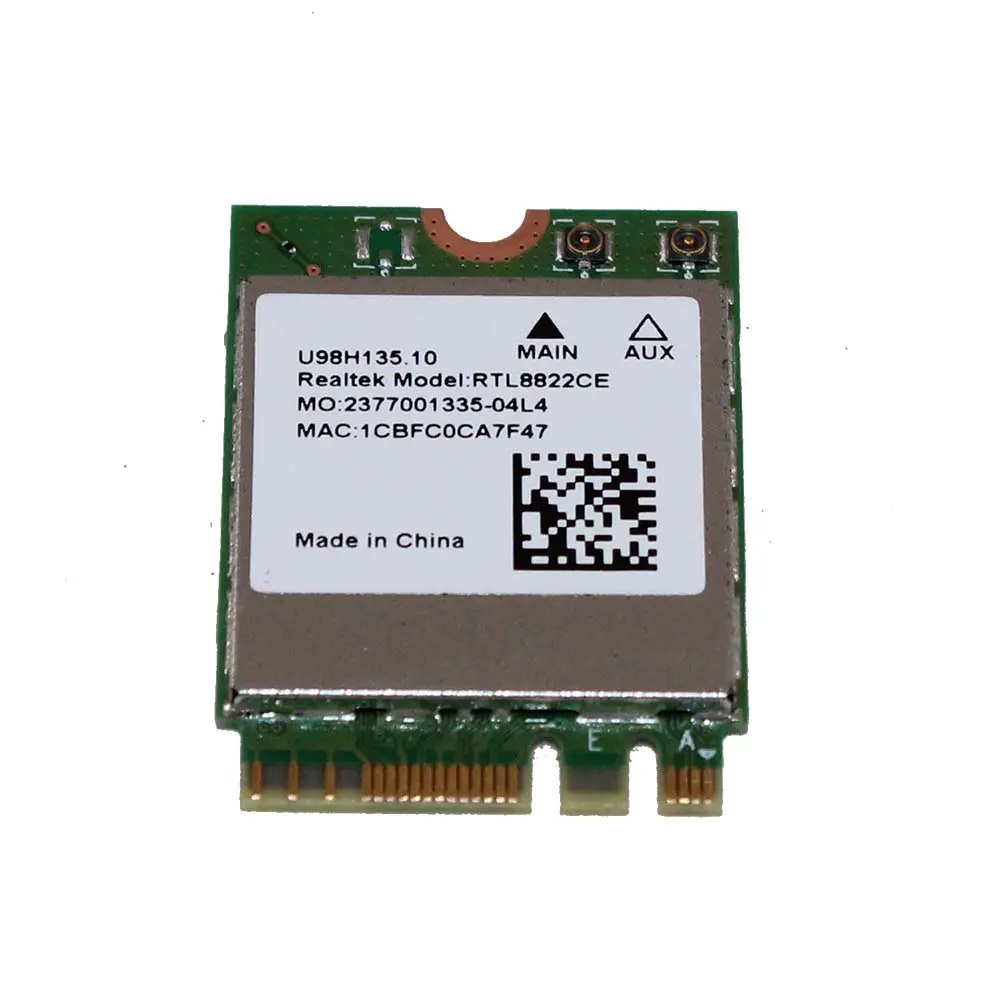
Wireless Card
Provides wireless connectivity to the laptop. Depending on the card this can be WWAN, WLAN and Bluetooth. Normally found plugged into the system board. Some laptops have multiple cards for different connection types, e.g. WLAN and Bluetooth.

